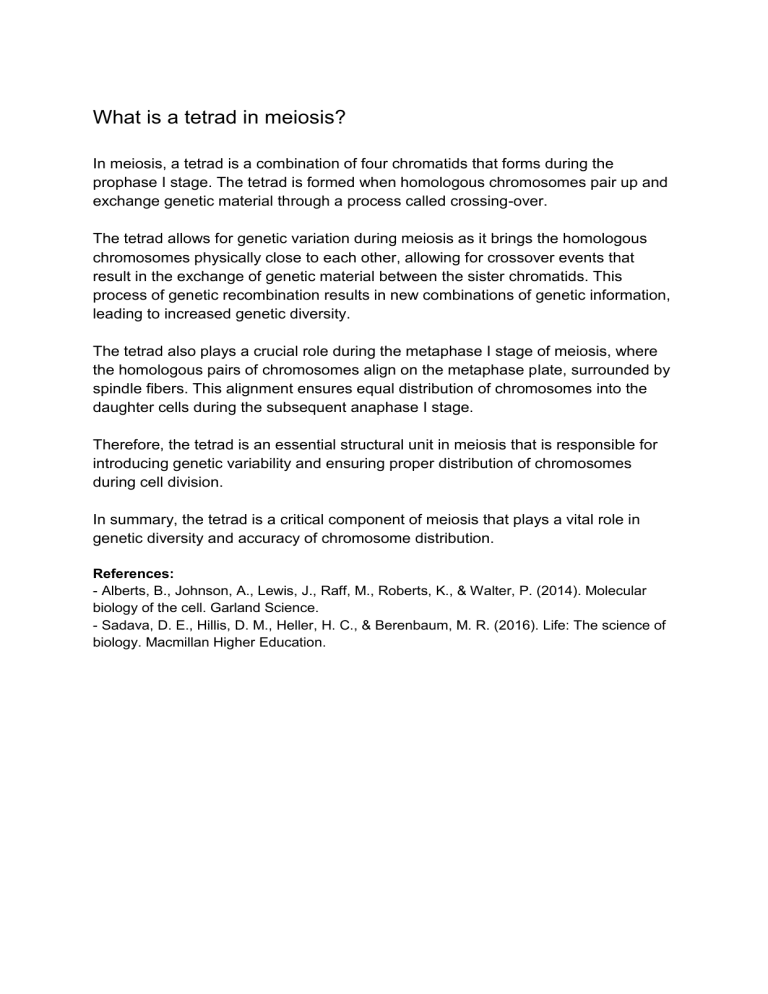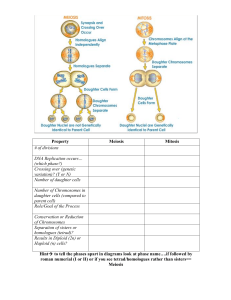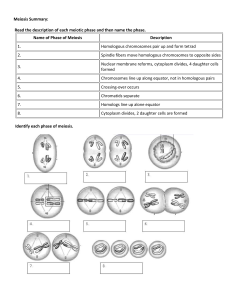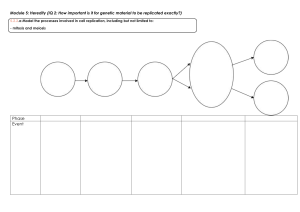
What is a tetrad in meiosis? In meiosis, a tetrad is a combination of four chromatids that forms during the prophase I stage. The tetrad is formed when homologous chromosomes pair up and exchange genetic material through a process called crossing-over. The tetrad allows for genetic variation during meiosis as it brings the homologous chromosomes physically close to each other, allowing for crossover events that result in the exchange of genetic material between the sister chromatids. This process of genetic recombination results in new combinations of genetic information, leading to increased genetic diversity. The tetrad also plays a crucial role during the metaphase I stage of meiosis, where the homologous pairs of chromosomes align on the metaphase plate, surrounded by spindle fibers. This alignment ensures equal distribution of chromosomes into the daughter cells during the subsequent anaphase I stage. Therefore, the tetrad is an essential structural unit in meiosis that is responsible for introducing genetic variability and ensuring proper distribution of chromosomes during cell division. In summary, the tetrad is a critical component of meiosis that plays a vital role in genetic diversity and accuracy of chromosome distribution. References: - Alberts, B., Johnson, A., Lewis, J., Raff, M., Roberts, K., & Walter, P. (2014). Molecular biology of the cell. Garland Science. - Sadava, D. E., Hillis, D. M., Heller, H. C., & Berenbaum, M. R. (2016). Life: The science of biology. Macmillan Higher Education.




